| << Chapter < Page | Chapter >> Page > |
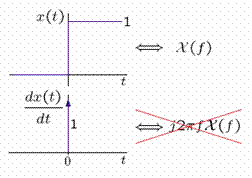
The derivative of x(t) is a unit impulse in time but the constant is lost. Thus, it must be included.
Hence,
Two-minute miniquiz problem
Problem 17-1 — Step with a dc offset
Find the Fourier transform of x(t).

Solution
We can represent x(t) as
x(t) = 3/2 + (1/2)sgn(t).
Hence,
9/ Causal cosinusoidal time function
A causal cosinusoid is a cosinusoid that starts at t = 0,
Therefore,
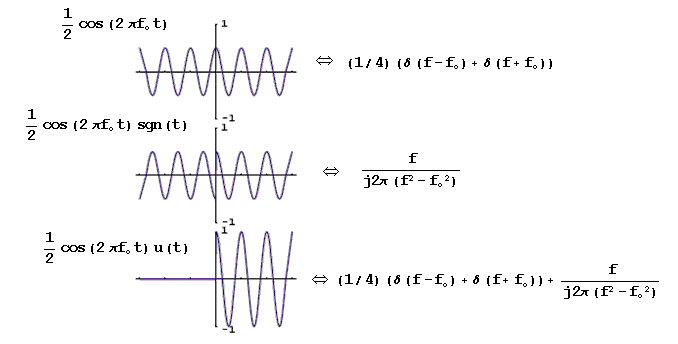
The Fourier and Laplace transforms of the causal cosinusoid are:
Therefore, just as with the unit step, the causal cosinusoid has poles on the jω axis, and the Fourier transform contains impulses at the frequencies of the poles.
A causal sinusoid is a sinusoid that starts at t = 0,
Therefore,
10/ Rectangular pulse
a/ Rectangular pulse — derivation
The transform of the rectangular pulse x(t) is:
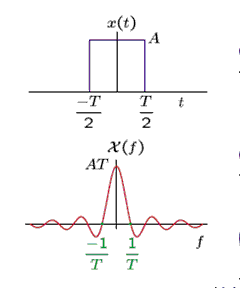
where n is an integer.
b/ Use of moment properties
From the moment properties we know that
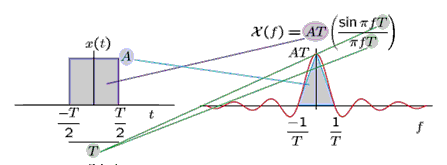
Note thatwhich is just the area of the inscribed triangle.
c/ Sinc function
The type of function arises so frequently that it is useful to
define the sinc function,
Therefore,
d/ Source of zeros in FT
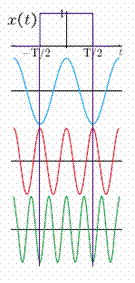
has zeros at f = n/T for n ≠ 0. What causes these zeros?
Note from the definition of the Fourier transform
The duration of x(t) is T. Hence, the integral is zero for those frequencies whose periods are submultiples of T. These are the frequencies f = n/T where n ≠ 0. The examples show the frequencies f = 1/T , f = 2/T , and f = 3/T .
e/ Alternate derivation of FT
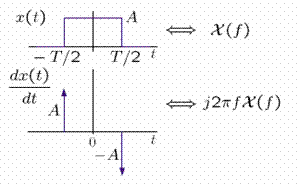
The Fourier transform can be found from
f/ Effect of duration
Consider the sequence of rectangular pulses of the form
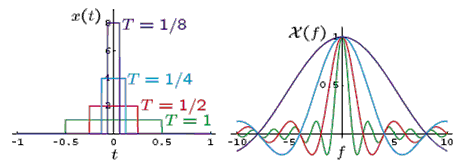
Note that as T decreases x(t) becomes tall and narrow and X(f) gets broader in frequency. Interpreted as generalized functions, x(t) → δ(t) and X(f) → 1.
11/ Triangular pulse
A triangular pulse is obtained by convolving a rectangular pulse with itself.
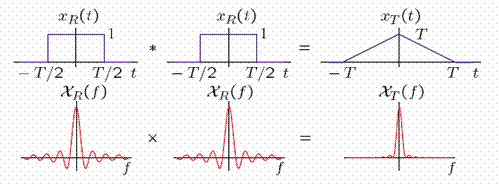
Since xT (t)=xR(t)*xR(t), the triangular pulse has the transform
IV. FILTERING REVISITED

Notification Switch
Would you like to follow the 'Signals and systems' conversation and receive update notifications?